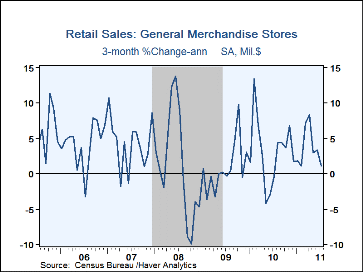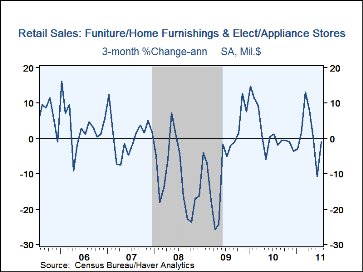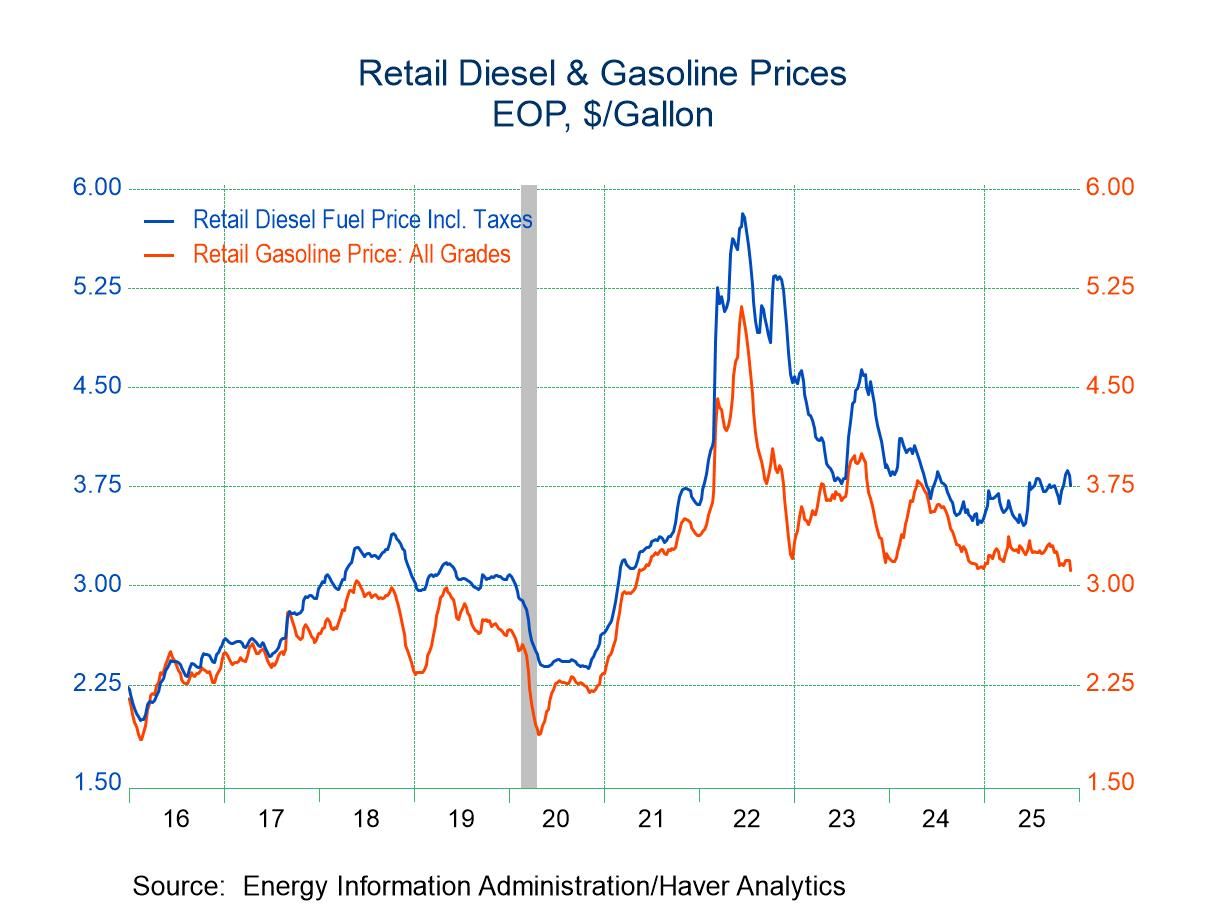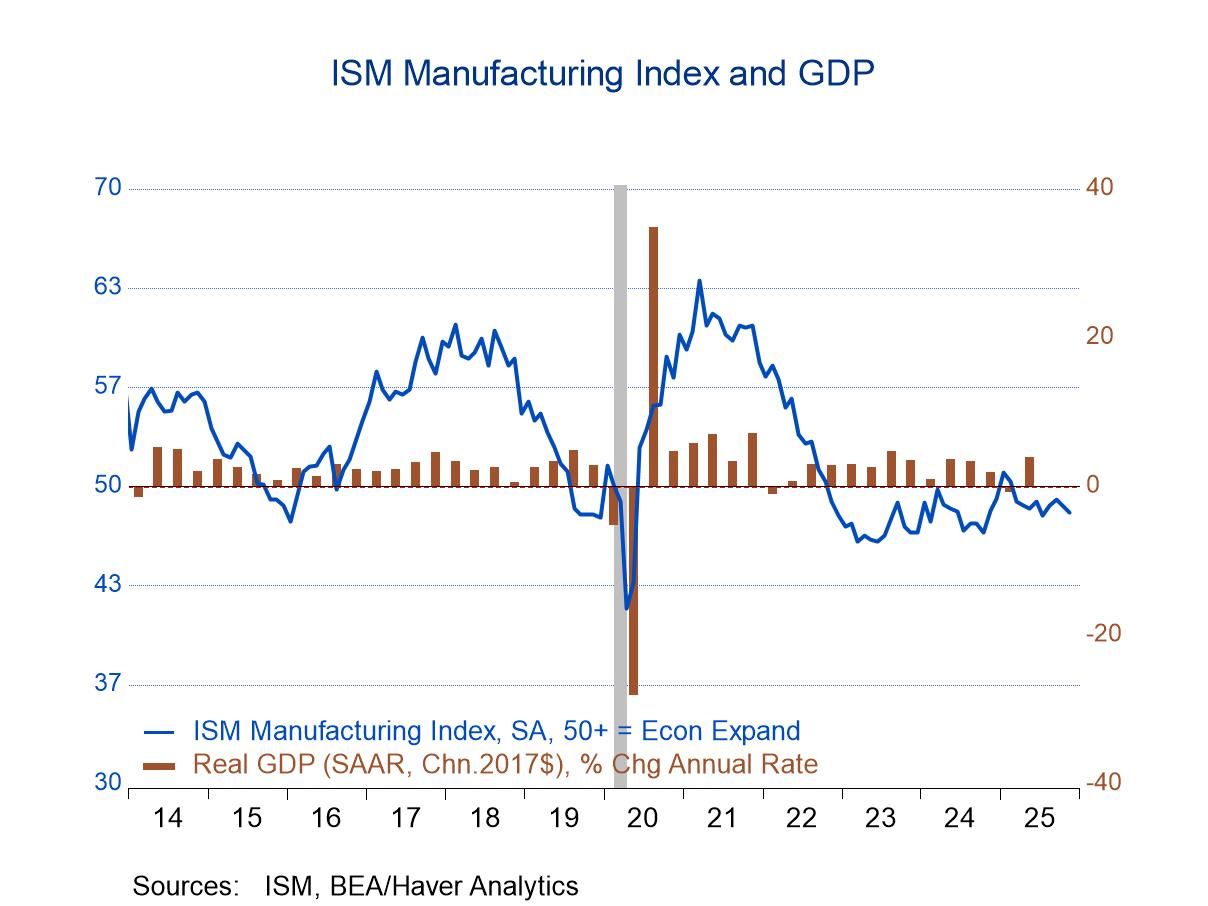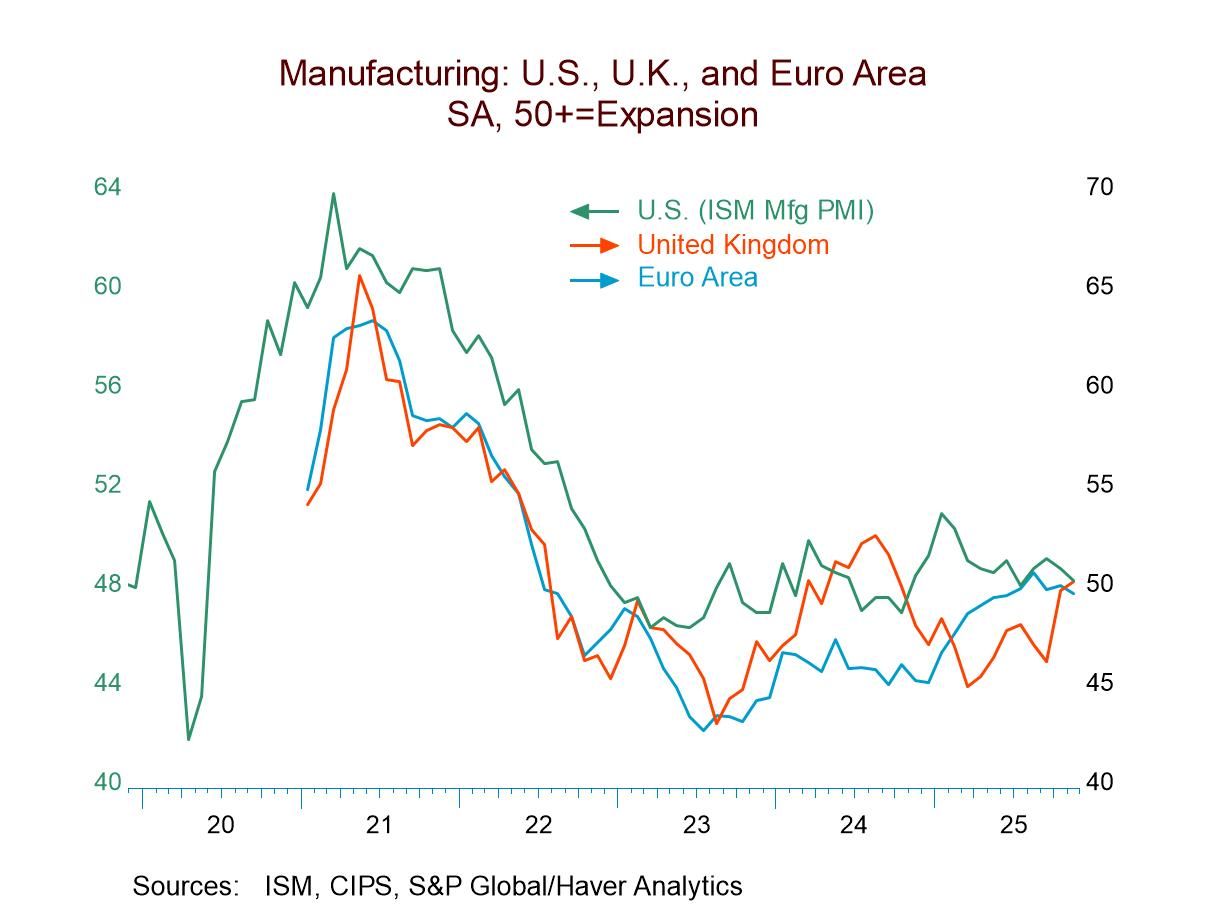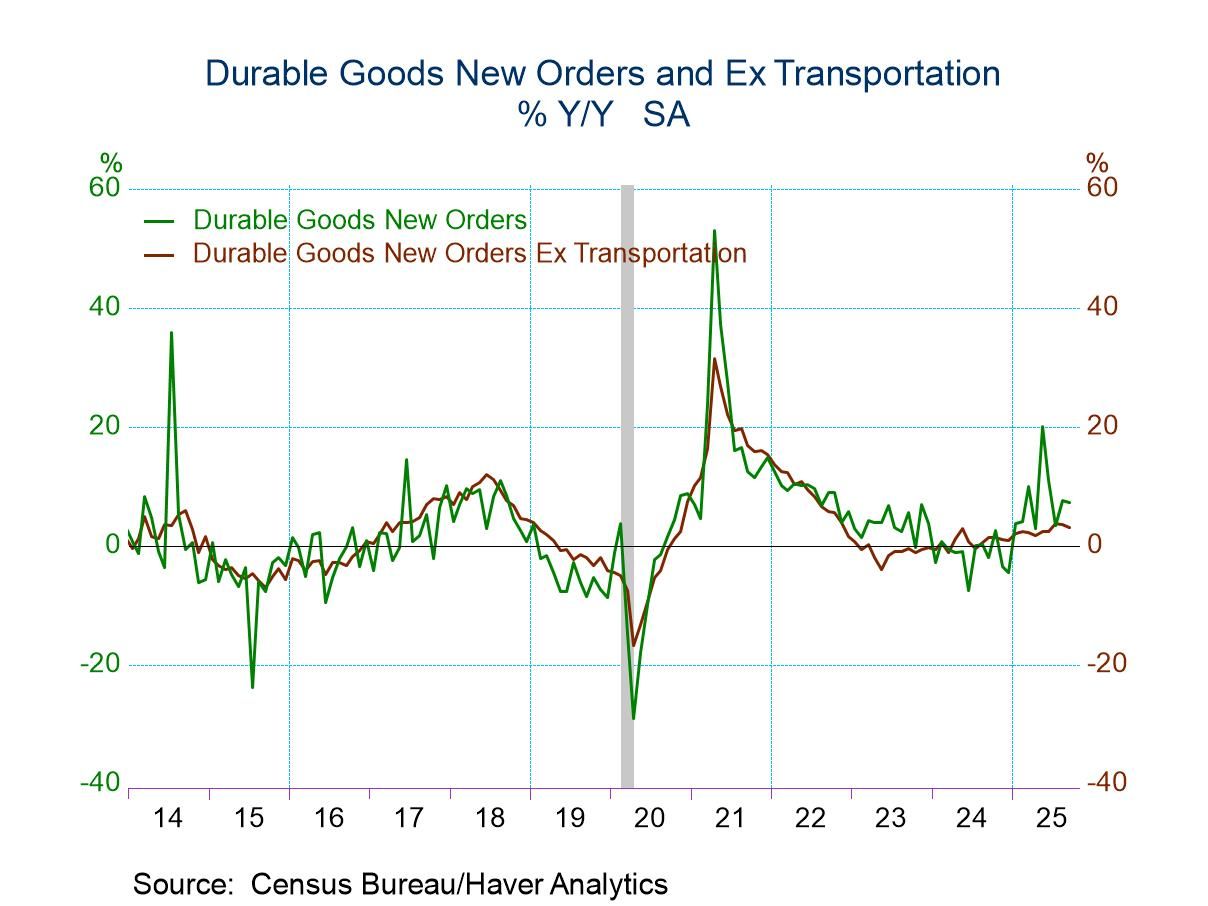 Global| Aug 12 2011
Global| Aug 12 2011U.S. Retail Sales Gain M/M But Trend Softens
by:Tom Moeller
|in:Economy in Brief
Summary
Total retail & food service sales increased 0.5% last month following a 0.3% June increase, revised up from 0.1%. The July increase roughly matched Consensus expectations for a 0.4% rise, according to the Action Economics survey. [...]
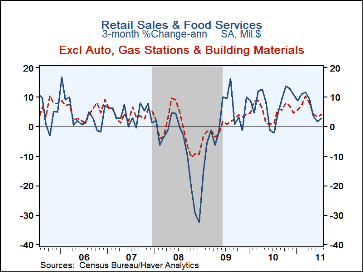 Total retail & food service sales increased 0.5% last month
following a 0.3% June increase, revised up from 0.1%. The July
increase roughly matched Consensus expectations for a 0.4% rise, according
to the Action Economics survey. Softness, however, emerges in three-month
growth versus earlier readings. During the last three months, retail sales
rose at a 2.8% annual rate versus double-digit growth during Q1'11 &
Q4'10. Excluding autos, July sales rose 0.5%, better than the expected 0.2%.
Here again, however, three-month growth in nonauto sales of 3.9% follows
earlier double-digit rates.
Total retail & food service sales increased 0.5% last month
following a 0.3% June increase, revised up from 0.1%. The July
increase roughly matched Consensus expectations for a 0.4% rise, according
to the Action Economics survey. Softness, however, emerges in three-month
growth versus earlier readings. During the last three months, retail sales
rose at a 2.8% annual rate versus double-digit growth during Q1'11 &
Q4'10. Excluding autos, July sales rose 0.5%, better than the expected 0.2%.
Here again, however, three-month growth in nonauto sales of 3.9% follows
earlier double-digit rates.
Recent stability in gasoline prices was reflected last month in a 1.6% m/m sales increase (23.6% y/y) after the 1.7% June decline. For motor vehicles, sales gained only 0.4% which lagged the 5.8% gain in unit sales. (Price discounting is at work.) Excluding gasoline and autos, retail spending rose 0.3% last month. Three-month growth in sales fell to 3.4%. Finally, sales of building materials slipped 0.4% (+7.5% y/y). A notion of "core" retail sales is sometimes valuable in suggesting how sales will trend after temporary distortions fade. Therefore, excluding gasoline, autos and building materials, which together account for one third of what consumers buy, sales rose 0.3% (6.4% y/y) after a 0.4% June increase. That's not bad since the three-month growth rate of 4.1% equals last year's annual gain. However, it's less-than half the peak rate at year-end.
Discretionary spending was generally soft in July. Apparel store sales gained just 0.5% (7.7% y/y) after an upwardly revised 1.2% June increase. Also, sales at general merchandise outlets were unchanged (3.7% y/y) after a 0.5% June rise. Sales of furniture, home furnishings and appliances jumped 1.0% (0.7% y/y) but that followed three months of decline. Sales at food service & drinking places slipped 0.1% (+5.6% y/y). Non-store retailer sales rose 0.9% (14.1% y/y) and made up for earlier softness. Currently, sales by electronic shopping & mail-order houses account for roughly ten percent of nonauto retail sales less building materials & gasoline.
The retail sales figure are available in Haver's USECON database. The Action Economics figures are in the AS1REPNA database.
| Retail Spending (%) | Jul | Jun | May | Jul Y/Y | 2010 | 2009 | 2008 |
|---|---|---|---|---|---|---|---|
| Total Retail Sales & Food Services | 0.5 | 0.3 | -0.0 | 8.5 | 6.4 | -7.0 | -1.2 |
| Excluding Autos | 0.5 | 0.2 | 0.3 | 8.6 | 5.7 | -5.5 | 2.1 |
| Retail Sales | 0.5 | 0.3 | -0.2 | 8.9 | 6.8 | -7.8 | -1.6 |
| Motor Vehicle & Parts | 0.4 | 0.7 | -1.6 | 8.1 | 10.0 | -13.7 | -14.0 |
| Retail excluding Autos | 0.6 | 0.2 | 0.2 | 9.1 | 6.1 | -6.3 | 2.1 |
| Gasoline Stations | 1.6 | -1.7 | 0.6 | 23.6 | 16.8 | -22.2 | 10.4 |
| Non-Auto Less Gasoline | 0.3 | 0.5 | 0.2 | 6.5 | 4.2 | -2.9 | 0.9 |
| Food Service | -0.1 | 0.4 | 1.0 | 5.6 | 2.7 | -0.5 | 2.2 |
Tom Moeller
AuthorMore in Author Profile »Prior to joining Haver Analytics in 2000, Mr. Moeller worked as the Economist at Chancellor Capital Management from 1985 to 1999. There, he developed comprehensive economic forecasts and interpreted economic data for equity and fixed income portfolio managers. Also at Chancellor, Mr. Moeller worked as an equity analyst and was responsible for researching and rating companies in the economically sensitive automobile and housing industries for investment in Chancellor’s equity portfolio. Prior to joining Chancellor, Mr. Moeller was an Economist at Citibank from 1979 to 1984. He also analyzed pricing behavior in the metals industry for the Council on Wage and Price Stability in Washington, D.C. In 1999, Mr. Moeller received the award for most accurate forecast from the Forecasters' Club of New York. From 1990 to 1992 he was President of the New York Association for Business Economists. Mr. Moeller earned an M.B.A. in Finance from Fordham University, where he graduated in 1987. He holds a Bachelor of Arts in Economics from George Washington University.


